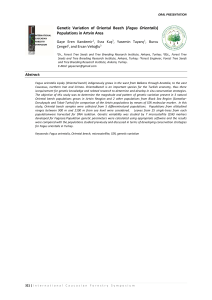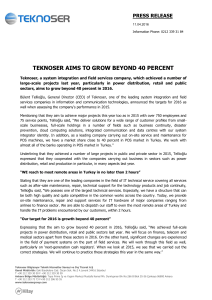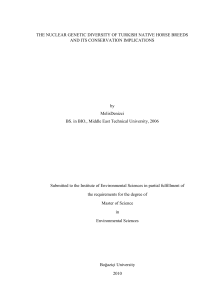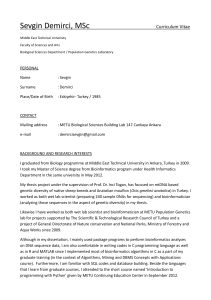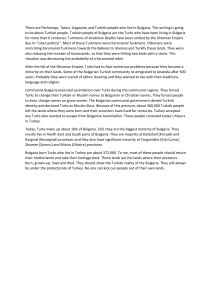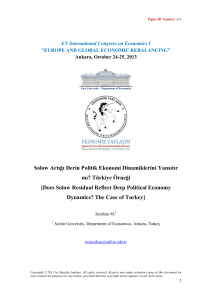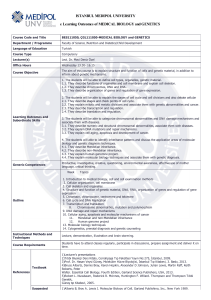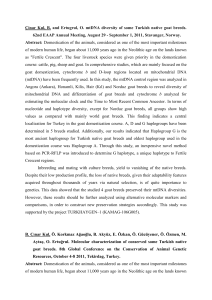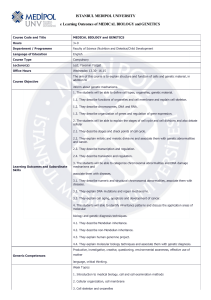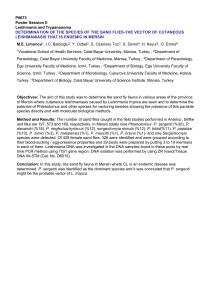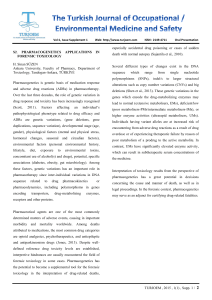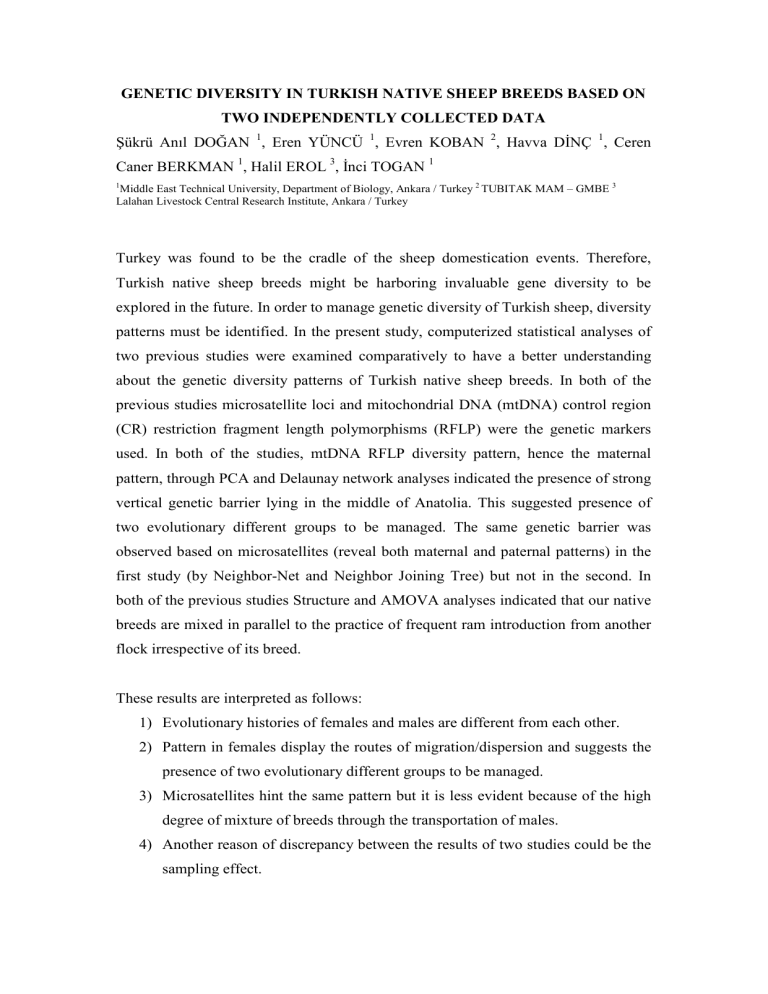
GENETIC DIVERSITY IN TURKISH NATIVE SHEEP BREEDS BASED ON
TWO INDEPENDENTLY COLLECTED DATA
Şükrü Anıl DOĞAN 1, Eren YÜNCÜ 1, Evren KOBAN 2, Havva DĐNÇ 1, Ceren
Caner BERKMAN 1, Halil EROL 3, Đnci TOGAN 1
1
Middle East Technical University, Department of Biology, Ankara / Turkey 2 TUBITAK MAM – GMBE 3
Lalahan Livestock Central Research Institute, Ankara / Turkey
Turkey was found to be the cradle of the sheep domestication events. Therefore,
Turkish native sheep breeds might be harboring invaluable gene diversity to be
explored in the future. In order to manage genetic diversity of Turkish sheep, diversity
patterns must be identified. In the present study, computerized statistical analyses of
two previous studies were examined comparatively to have a better understanding
about the genetic diversity patterns of Turkish native sheep breeds. In both of the
previous studies microsatellite loci and mitochondrial DNA (mtDNA) control region
(CR) restriction fragment length polymorphisms (RFLP) were the genetic markers
used. In both of the studies, mtDNA RFLP diversity pattern, hence the maternal
pattern, through PCA and Delaunay network analyses indicated the presence of strong
vertical genetic barrier lying in the middle of Anatolia. This suggested presence of
two evolutionary different groups to be managed. The same genetic barrier was
observed based on microsatellites (reveal both maternal and paternal patterns) in the
first study (by Neighbor-Net and Neighbor Joining Tree) but not in the second. In
both of the previous studies Structure and AMOVA analyses indicated that our native
breeds are mixed in parallel to the practice of frequent ram introduction from another
flock irrespective of its breed.
These results are interpreted as follows:
1) Evolutionary histories of females and males are different from each other.
2) Pattern in females display the routes of migration/dispersion and suggests the
presence of two evolutionary different groups to be managed.
3) Microsatellites hint the same pattern but it is less evident because of the high
degree of mixture of breeds through the transportation of males.
4) Another reason of discrepancy between the results of two studies could be the
sampling effect.
This study was supported by Scientific and Technical Research Council of Turkey (TUBITAK) as a
part of the project In Vitro Conservation and Preliminary Molecular Identification of Some Turkish
Domestic Animal Genetic Resources-I (TURKHAYGEN-I) under the grant number 106G115; the
British Council Turkey Partnership Program (2000-2003); Middle East Technical University Scientific
Research Projects Fund (Project numbers: BAP- 2001-07-02-00-87 and BAP-2002-07-02-00-07) and
ECONOGENE project (http://www.econogene.eu/default.asp).

